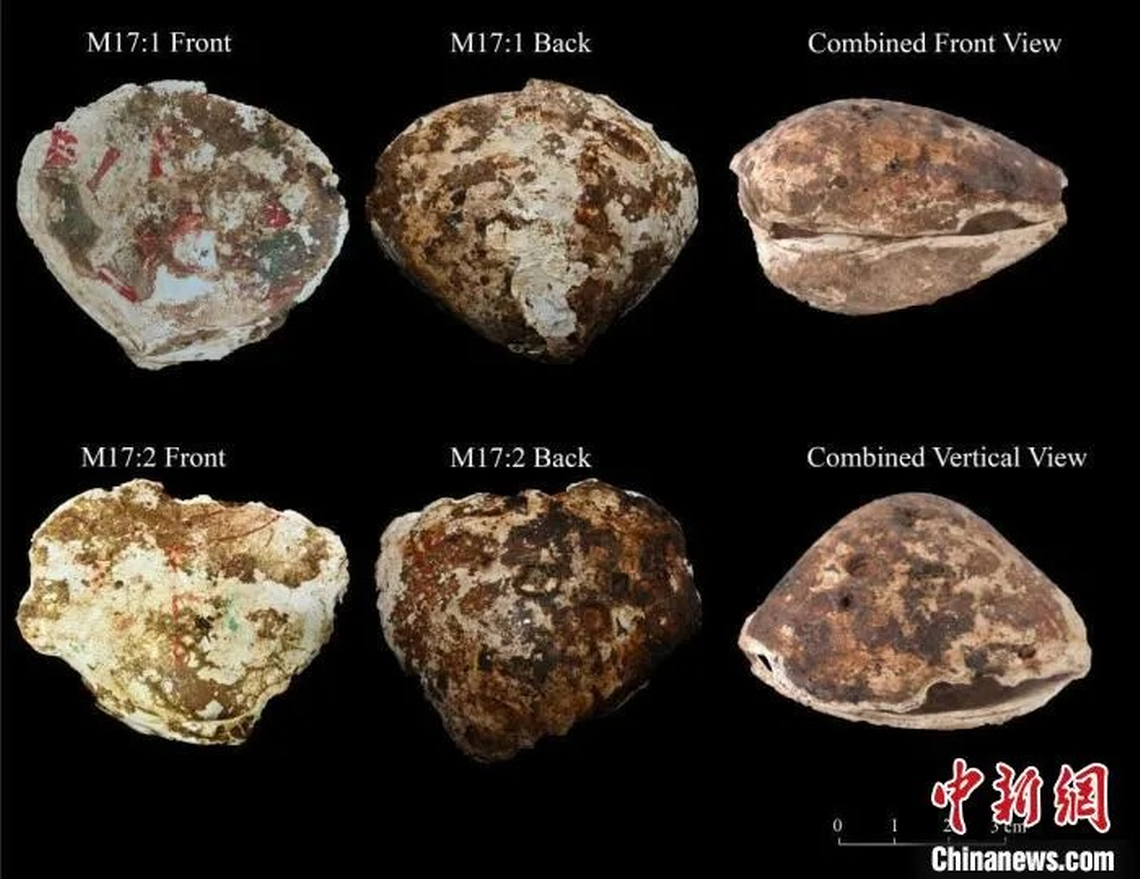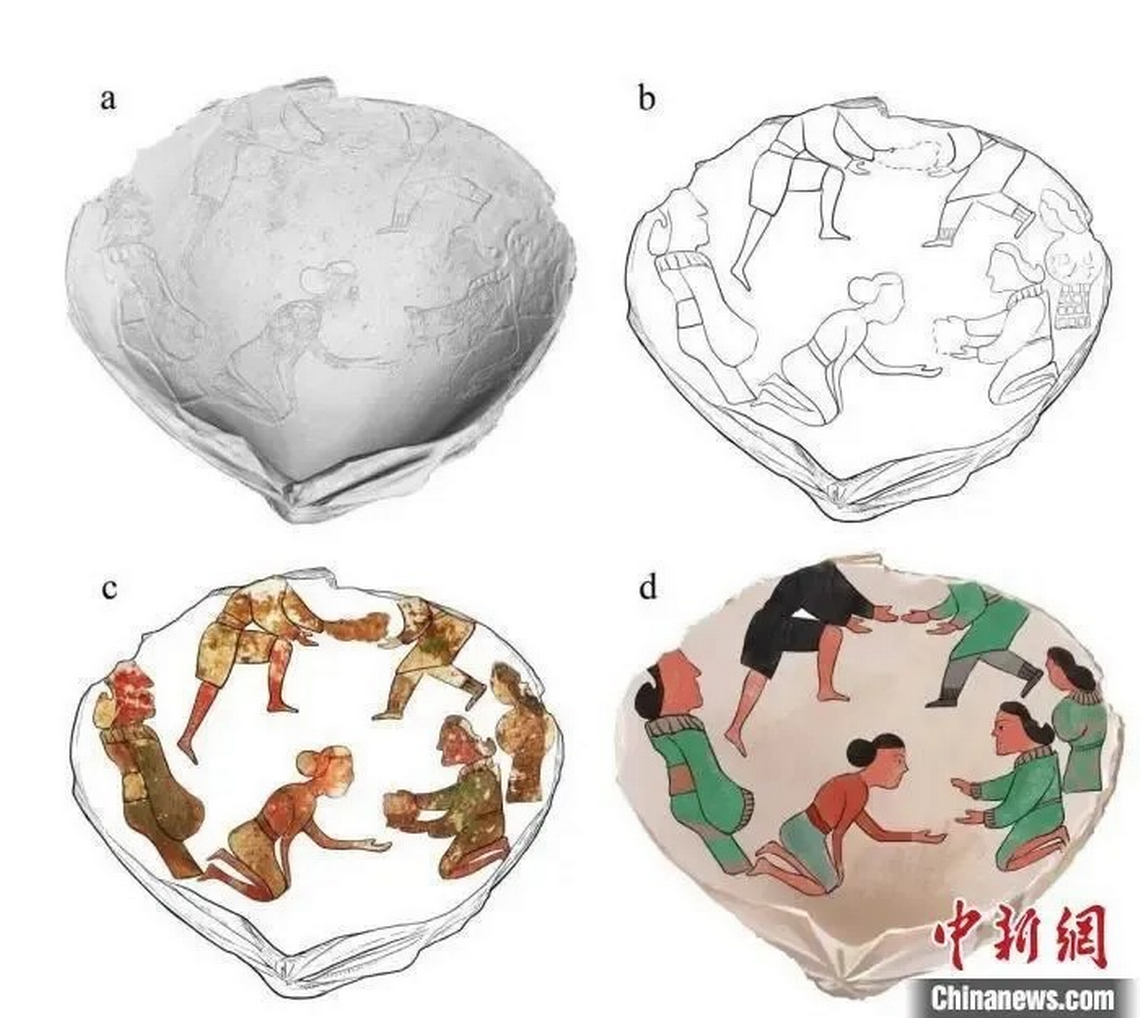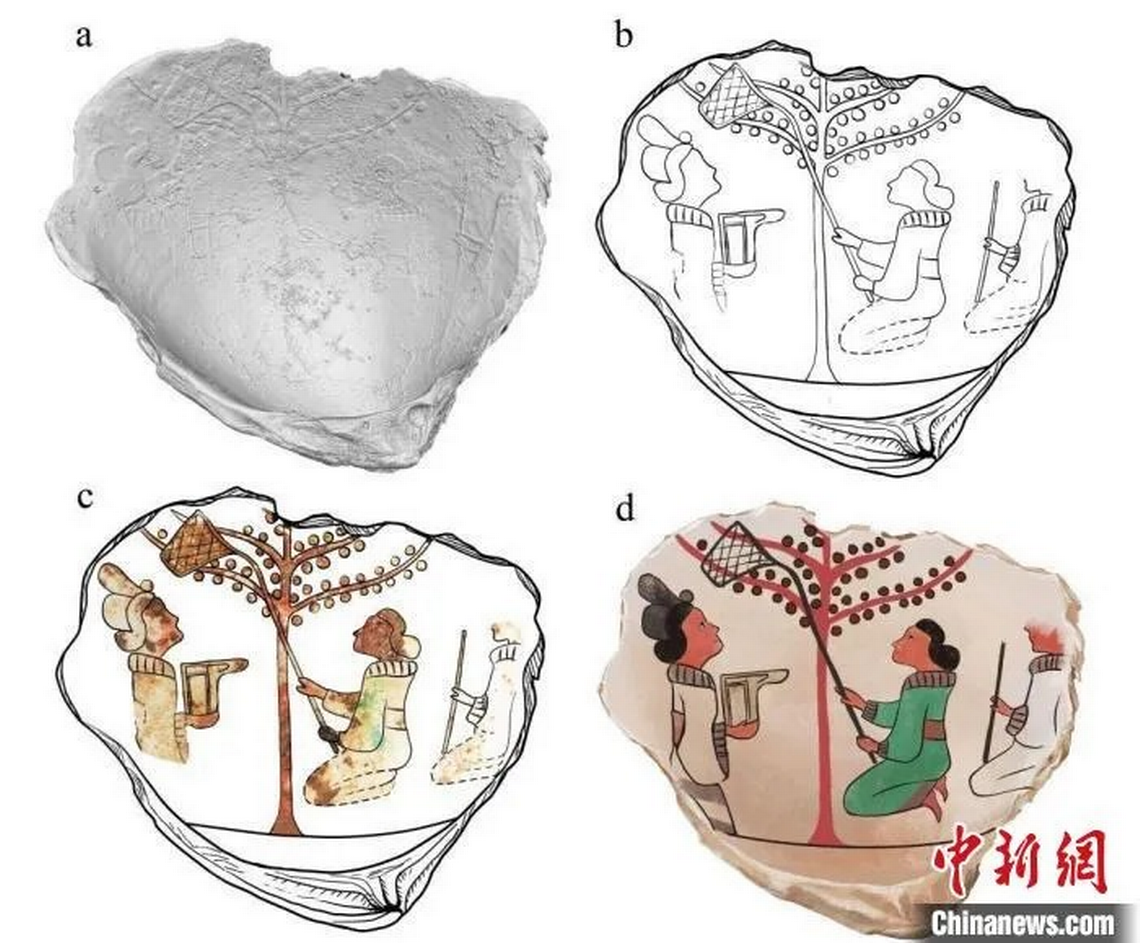Ancient images — painted inside shells — recreated for first time in China. Take a look
More than 2,000 years after an artist in ancient China picked up a brush and a clam shell, researchers are getting the first glimpse at what they actually painted.
Clams were eaten by people of the Zhongshan Kingdom, but shells were also used as tools, religious props, currency and as canvases.
Despite their widespread use, very few are found in the archaeological record, and the ones that appear are damaged, aged and breaking down.
Now, using modern technology, researchers have been able to recreate the ancient images for the very first time.
Shell paintings belonging to the Warring States period, between 476 and 221 B.C., were discovered in ancient tombs in Hebei Province, according to a study published in the May-June issue of the Journal of Cultural Heritage.

Uncover more archaeological finds
What are we learning about the past? Here are three of our most eye-catching archaeology stories from the past week.
→ Massive 2,200-year-old tomb with grand interior unearthed in China
→1,000-year-old weapon — the first of its kind — found sticking out of grave in Spain
→ Workers unearth steelworks at medieval castle in UK — and find someone's 'hidey-hole'
Having spent centuries underground, the shells were covered in dirt, broken in some places and whatever was left of the paint inside had all but disappeared from the shell’s surface, according to a news release shared by the China News Network on May 7.
“Employing various techniques, including microscopic observation, computed tomography (CT), X-ray fluorescence (XRF), multispectral imaging, and Raman spectroscopy, we non-destructively unveil the exquisite images obscured by soil and reveal the unparalleled shallow relief technique employed in their creation,” researchers said in the study.

One of the recreated images depicts a group of people standing around in a circle and holding out their hands to one another, according to the China News Network. The people are in green clothes with black hair and other colorful accents.
A second shell reconstruction shows a woman sitting below a tree and picking the fruit with a net on the end of a long pole, the photos show. She wears a green dress and another woman stands ready to collect the fruit from the net.

“The meticulous use of prominent lines emphasizes color patches rather than the brushstrokes relied upon in later stereotypical Chinese painting, significantly reshaping previous notions about the early development of Chinese painting. This unique expression undoubtedly refreshes our understanding of early ancient art,” the researchers said in the study.
Other painted shells have been found before, according to the study and China News Network, placed on the side of an ancient coffin outside the box.
The reconstructed shells were found placed at the feet of the person buried in the tomb, suggesting that this culture had different funeral practices than other communities during the same time period, according to the China News Network.
Other painted shells have also been discovered across the globe from other indigenous communities, the researchers said.
The images typically depict societal activities, including cultural traditions, China News Network reported.
More research will be needed for this rare art form to be better understood, the researchers said.
Baidu Translate was used to translate the article from the China News Network.
Rare golden artifacts stolen from UK museum. Suspects on scooters sought by police
Stone workshops — used by craftsmen in the Middle Ages — found in France. See them
Mysterious symbols from ancient Iraq temple baffled researchers for years — until now
Archaeological site robbery report leads to ancient discoveries in Peru, officials say
